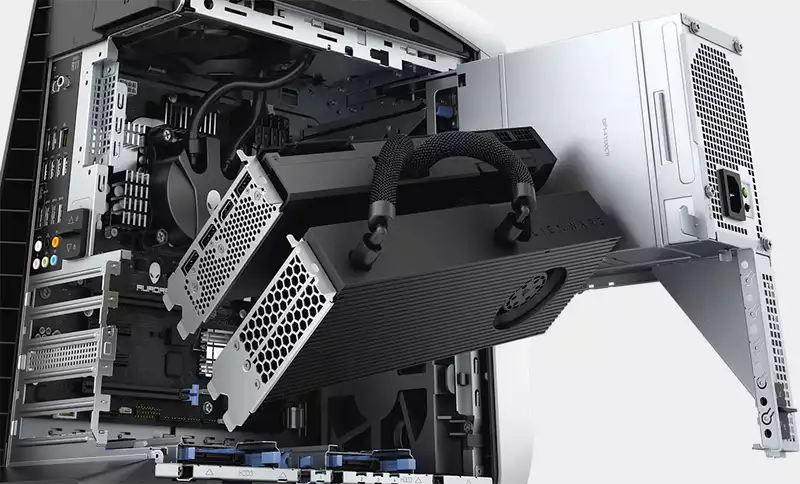Called the "Rad Card GPU Cooler," Asetek accurately markets it as the industry's first slot-in PCIe radiator card. This differs from traditional AIO coolers in that the radiator must be placed at the edge of the case where the cooling fan would normally be located.
The Rad card eschews the traditional arrangement in favor of a PCIe slot in order to achieve liquid cooling in a space-constrained case. Of course, this makes little sense if you are using a larger case that can accommodate a conventional AIO cooler, and even many mid-towers support at least up to a 240mm radiator. However, this is not always the case.
"Space is a real issue for PC makers, and until now GPU air cooling has been the only option," says Asetek, "Asetek has tackled this challenge head on, innovating a new approach to radiator technology that rethinks radiator shape and location Asetek's Rad Card GPU cooler fits into the motherboard's PCIe slot just like any other add-in card.
Another caveat there - this seems to be aimed only at OEM system builders for now; according to Asetek, they were asked by Alienware to design an AIO GPU cooler that would fit into a tight space, and the resulting Rad card, which has been refreshed and The resulting Rad card will debut in the refreshed Aurora desktop.
Asetek said that the Rad card will be "first available" in a location that suggests it will later be included in other OEM systems; no mention was made of Asetek's plans to offer this product as a stand-alone product. Perhaps a peripheral manufacturer will pick it up.
Ideally, we would like to see a version made to cool the CPU. I can imagine using something like this in a small form factor case if it doesn't interfere too much with airflow.


Comments